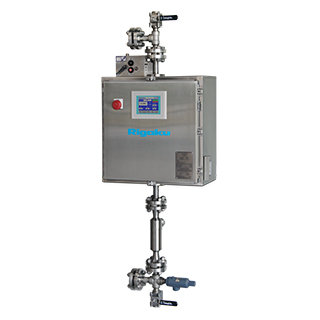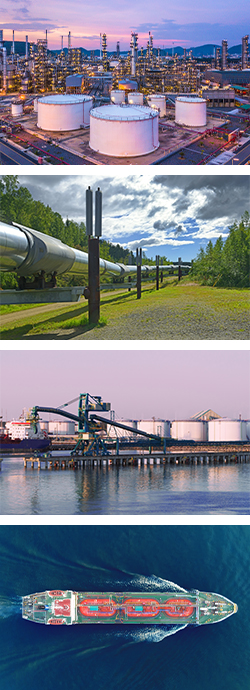
Sulfur Process Analyzer for Crude Oil, Marine Bunker Fuel, and Blending Operations
Key Advantages & Features
NEX XT is the next-generation process gauge for high-level total sulfur measurement (0.04 to 6 wt% S) of crude, bunker fuel, fuel oils, and other highly viscous hydrocarbons, including residuums.
- Measure sulfur (S) from 0.04 to 6 wt%
- Compact design with no routine maintenance
- Up to 1450 psig and 200°C with custom configurations
- User-adjustable data update frequency
- Reduced standards requirements
- No sample condition or recovery system
- No radioisotopes

Additional Notes
- Product Overview
- Application Notes
- XRT/XRA Method
- No Radioisotopes

On-Line Total Sulfur Gauge for Pipelines, Upgrading Facilities, and Refineries
This versatile, compact, and robust X-ray Transmission / Absorption (XRT / XRA) process gauge is specifically optimized for the total sulfur analysis needs of refineries, pipelines, blending operations, bunkering terminals, and other storage facilities. Applications for the NEX XT include bunker fuel blending to meet MARPOL Annex VI sulfur restrictions, interface detection of different grade fuels delivered via pipelines, refinery feedstock blending and monitoring, and the quality monitoring of crude at remote collection and storage facilities.
MARPOL Regulations
IMO ship pollution rules are contained in the “International Convention on the Prevention of Pollution from Ships”, known as MARPOL 73/78. On 27 September 1997, the MARPOL Convention was amended by the “1997 Protocol,” which includes Annex VI titled “Regulations for the Prevention of Air Pollution from Ships”. MARPOL Annex VI sets limits on NOx and SOx emissions from ship exhausts and prohibits deliberate emissions of ozone depleting substances. The Rigaku NEX XT is the perfect tool to assay marine bunker fuels for blending to meet emissions regulation compliance.
Third Generation Technology
The Rigaku NEX XT system is faster, more sensitive, and far more compact than competitive systems and provides continuous, reliable detection of sulfur at pressures up to 1450 psig and 200ºC. Rigaku NEX XT can operate as a stand-alone analyzer or provide real time closed loop control when tied into a blending or plant wide automation system. Among its other key features are a simplified user interface, reduced standards requirement, automatic density compensation, automatic water compensation, password protection, and standard platform for communicating sulfur, density, and water content to a plant wide DCS. Due to its unique design and robust construction, sample conditioning and recovery systems are typically not required.
X-ray Transmission (XRT) gauging has long been an accepted technique for the measurement of total sulfur (S) in heavy hydrocarbon process streams. Whether used for pipeline switching, crude oil blending or to assay or blend marine and bunker fuels, the Rigaku NEX XT XRT process analyzer is well suited to rigorous process environments, with pressures up to 1450 psig and temperature up to 200°C. X-ray transmission gauging involves measuring the attenuation of a monochromatic X-ray beam at a specific energy (21 keV) that is specific to sulfur (S). In practice, a process stream passes through a flowcell where sulfur (S), in the hydrocarbon matrix, absorbs X-rays transmitted between an X-ray source and detector. The recorded X-ray intensity is inversely proportional to the sulfur concentration, thus the highest sulfur levels transmit the least X-rays.
Rigaku Delivers Superior Performance Without Dangerous Radioisotopes
Globally, the petroleum industry continues to employ tens of thousands of radioisotopes in activities that range from exploration and production to distribution. The presence of these radioisotope sources, in such vast numbers, represents a statistically significant opportunity for theft and subsequent misuse. Governments worldwide now regard radiological terrorism, through the use of radiological dispersive devices (RDD) – often called “dirty bombs,” to be far more likely than use of a nuclear explosive device. In the context of the recent Deepwater Horizon Incident in the Gulf of Mexico, it is incumbent on the petroleum industry to evaluate liability exposure relative to its radioisotope inventory. Whether protecting the customer base or corporate shareholders, technology now exists to largely mitigate the risk associated with previous generation isotope-based technologies. Click through to read this article: Dirty Bombs and Liability Exposure in the Petroleum Industry.
